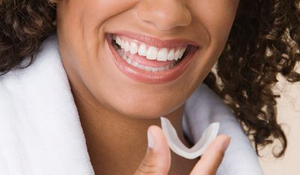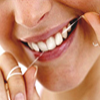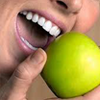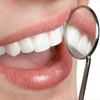
Tooth bleaching is a common procedure in general dentistry but most especially in the field of cosmetic dentistry. Many people consider white teeth to be an attractive feature of a smile. Bleaching very effective technique for lightening teeth. It will not, however, alter the appearance of existing fillings and crowns.
Methods
There are two main methods of bleaching--one performed by dentist and one performed by the teeth-bearer him- or herself. A dentist applies a high concentration of oxidizing agent for a short period of time, which produces quick results. In order to reduce the risk of chemical burns to the soft tissues, most in-office bleaching procedures use a light-cured protective layer that is carefully painted on the gums and papilla (the tips of the gums between the teeth). The bleaching agent is either carbamide peroxide, which breaks down in the mouth to form hydrogen peroxide, or hydrogen peroxide itself. The bleaching gel typically contains up to 35% carbamide peroxide which is roughly equivalent to a 12% hydrogen peroxide concentration.At-home whitening involves purchasing a thin mouthguard or strip that holds a relatively low concentration of oxidizing agent next to the teeth for as long as several hours a day for a period of 5 to 14 days. This is known as take-home or over-the-counter bleaching. Results can vary, depending on which application is chosen, with some people achieving whiter teeth in a few days, and others seeing very little results or no results at all. Whitening is potentially better at a dentist because the strip or mouth-guard does not completely conform to the shape of the teeth, sometimes leaving the tips of the teeth (near the gumline) unbleached. The bleaching agent is typically less than 10% hydrogen peroxide equivalent so irritation to the soft tissue around your teeth is minimized. Dentists as well as some dental laboratories can fabricate custom fitted whitening trays that will greatly improve the results you can achieve with an "at home" whitening method.
A typical course of bleaching can produce dramatic improvements in the cosmetic appearance of most stained teeth; however, some stains do not respond to bleaching. Tetracycline staining may require prolonged bleaching, as it takes longer for the bleach to reach the dentine layer. White-spot decalcifications may also be highlighted and become more noticeable. Bleaching is least effective if teeth have white spots, decay or infected gums. It is also least effective when the original tooth color is grayish. Bleaching is most effective with yellow discolored teeth. Recently, efforts have been made to accelerate the bleaching process by the use of light. Studies have shown varying results as to the efficacy of light-activated bleaching.






